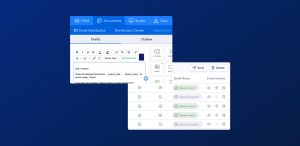In the last two years, there has been a big change in the way Kurtosys delivers applications to clients, most of which can be attributed to the use of cloud-based Infrastructure services. To keep pace with this shift, we have had to make some serious adjustments to our monitoring and application tracking.
Many of our clients operate and consume our services on a continuous 24/7 basis and the scale of our operations continues to grow. Both these factors have led to a different approach in support and they too introduce new requirements to our monitoring strategy.
Make changes to improve processes
At Kurtosys, we aim to provide a proactive strategy that detects and alerts us to problems before they manifest themselves to the end users. This is not an easy goal to achieve, but one that we must continue to develop in order to improve our client service. It doesn’t happen over night, but evolves progressively with the introduction of new tools and changes in culture and behaviour of a team.
In making these changes we have considered many factors that should be included in our monitoring capabilities. This starts with implementing traditional measures such as performance, capacity, uptime and throughput. However, we are now concerned with wider issues such as security, end user experience, service level analysis, data validation and other performance indicators and usage statistics so we can track the development of a client engagement.
Cloud application monitoring with AppDynamics
In the past, we were somewhat limited by the tools available. These tools did provide us with good environmental indicators for our infrastructure — by using these metrics we were able to determine the likelihood of events and problems. However, they were not very user-friendly to anyone who was unfamiliar with our infrastructure and hosting model. Now, by using a new generation of tools like AppDynamics, we are able to monitor transactions within the applications as well as those at the infrastructure level. This enables us to look in much more detail at different layers within our platform and provide meaningful information to a wider range of users including clients.
In addition to the greater transparency that our monitoring promises, we are also able to drill into issues, diagnose and rectify problems early and quickly. We no longer need to spend as much time trying to determine cause from symptoms that can so often result in the wrong conclusions. Now, we can focus on remediation and prevention, which is a good thing for all concerned.
The path to better client servicing
Of course, this is just the first step and our goals expand as we get better at what we do. Some ideas on our monitoring roadmap include optimisation of our cloud environments and tracking business KPIs. With each new step we see more potential and opportunity from our monitoring systems. First, we establish the robustness of our infrastructure, then we move on to address our client service and support obligations, and finally we drive out better business decisions through a more informed process.



